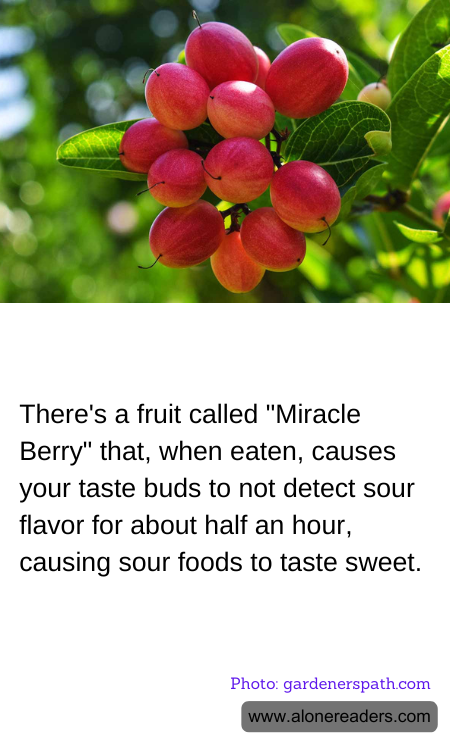
Miracle berry, scientifically known as Synsepalum dulcificum, is a remarkable fruit native to West Africa that has the unique ability to modify the perception of flavors. It is a small red berry that, when consumed, temporarily alters taste sensations, making sour and bitter foods taste sweet. This effect is due to miraculin, a glycoprotein found in the fruit, which binds to the taste buds on the tongue.
When the pulp from the miracle berry is consumed, miraculin works by binding to the sweet receptor cells on the taste buds. Ordinarily, it does not activate these receptors unless the environment is acidic. When sour or acidic foods are eaten after consuming the miracle berry, miraculin activates the sweetness receptors, effectively masking the sour taste and making the food taste sweet. This flavor altering effect can last from 30 minutes to about 2 hours.
The implications of such a fruit are interesting and quite varied. It has often been suggested as a sugar substitute for those looking to reduce their sugar intake or manage diabetes, as it can make bland or sour foods more palatable without the need to add sugar. Additionally, it has been used in culinary circles to create unique eating experiences, allowing chefs to play with flavor profiles in innovative ways.
Apart from its culinary uses, there is also interest in the potential health benefits of the miracle berry. While it is not a nutrient-rich fruit, its ability to alter taste without adding calories or sugars makes it a subject of interest for weight management and nutrition. However, more research is needed to fully understand the impacts of regular consumption of miracle berries on health and metabolism.
In summary, the miracle berry offers a fascinating glimpse into how our senses can be altered by nature. This seemingly simple fruit has the ability to turn sour tastes sweet and has potential applications that range from culinary innovations to potential health benefits, making it a subject of ongoing interest and study.